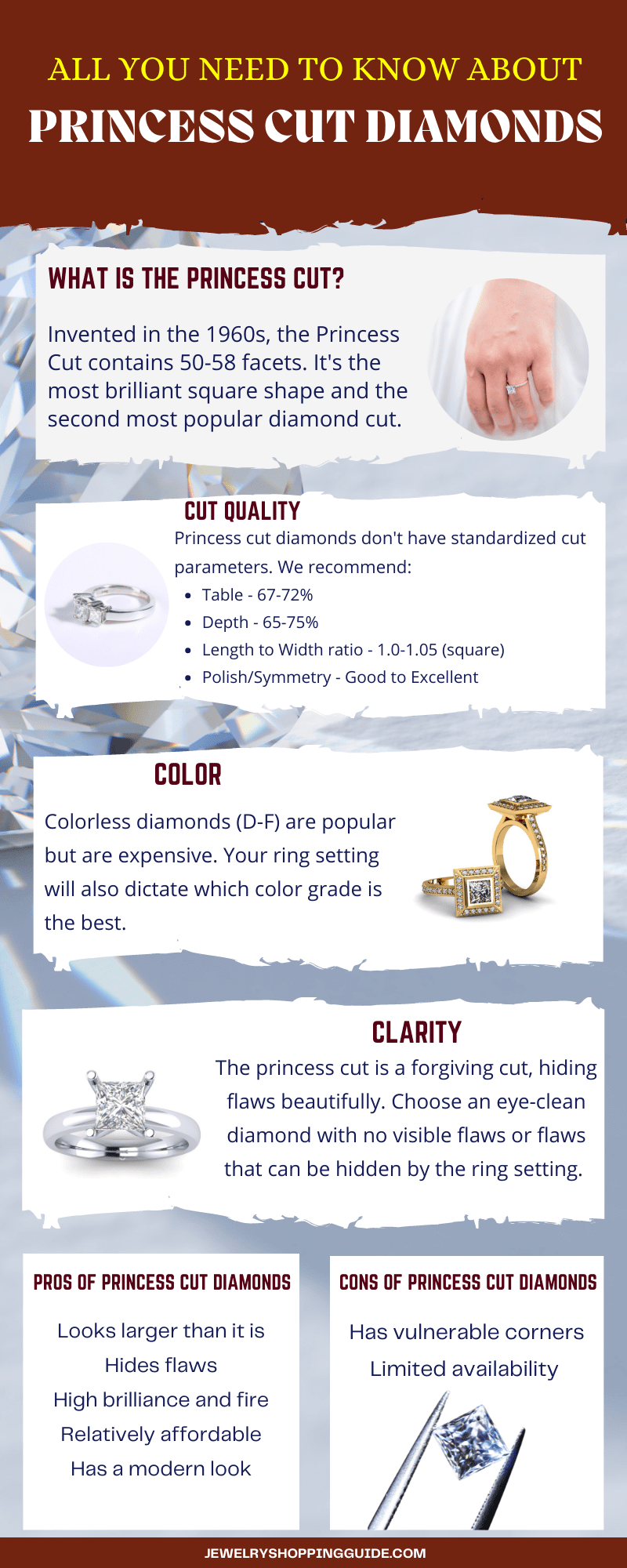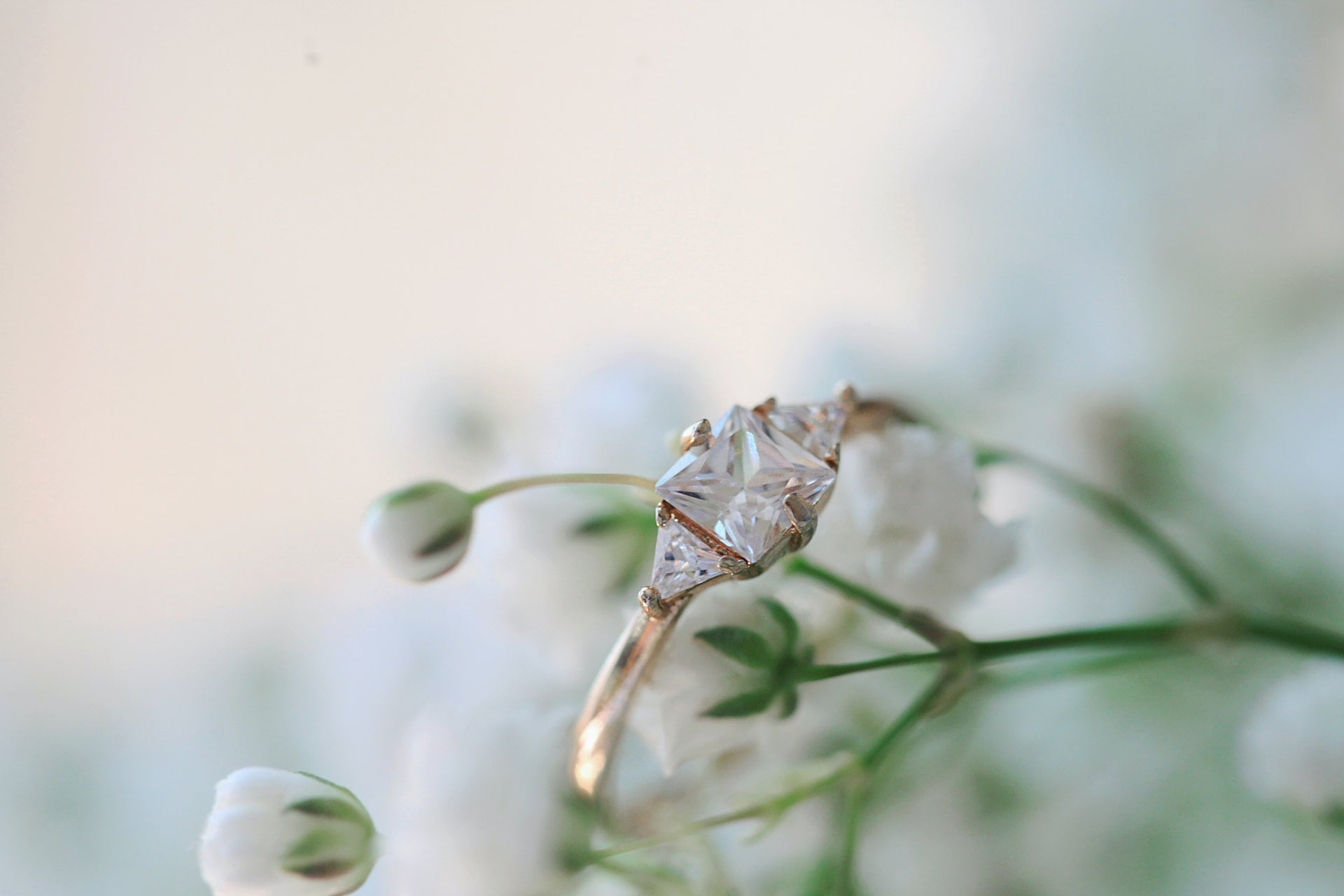
Table of Contents
The princess cut is relatively new in the world of diamond cuts. It was first introduced around the 1960s, but it was only in 1979 that it received its name and evolved into what we know today.
While the round diamond cut is more traditional, the princess cut appears more dramatic and modern, making the wearer stand out. It’s the second most popular cut for engagement rings. In this article, we cover all the basics of the princess cut you need to know before you buy.
Pros and Cons of Princess Cut Diamond
Princess cut diamonds offer the perfect marriage between a traditional diamond look and a modern, stylish design. It offers several benefits for the astute shopper. Here’s a quick look at the pros and cons of princess-cut diamonds to help you decide.
Princess Cut Diamond Faceting Structure
From the top view, the princess cut is square or slightly rectangular in appearance, while the underside features a 4-sided pyramidal shape. It contains between 50 to 58 facets, many of which are placed on the pavilion and girdle.
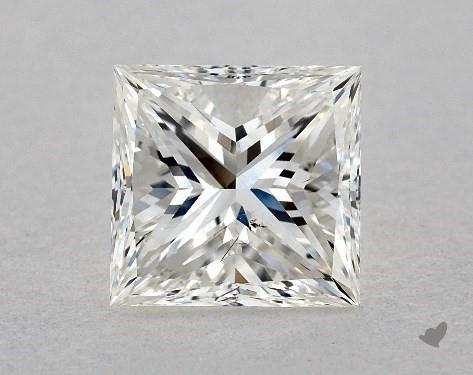
The table of the princess cut is large with standard bezel corners. Diamond cutters often add extra chevrons on the pavilion, which increases the number of surfaces on the stone, and enhances light performance. Princess cuts typically have two to four chevron patterns, which appear as crosses when viewed from the top.
Due to its exceptional distribution of light, the princess cut is the most brilliant of all the square shaped diamonds.
Why is the Princess Cut So Popular?
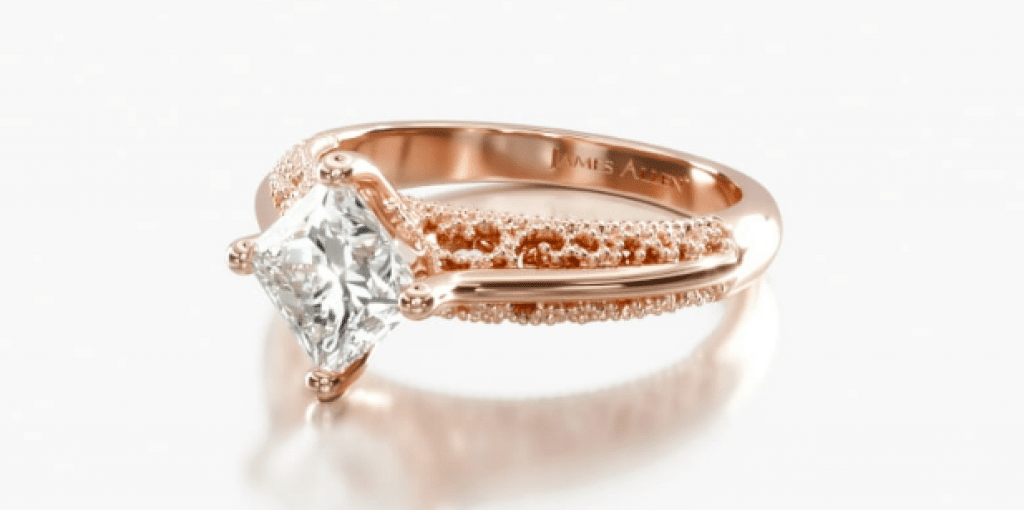
As the second most popular diamond cut, there’s no denying the appeal that the princess cut has on consumers. Here are some of the reasons that make it so popular.
- The Princess Cut Looks Bigger
The princess cut can give you the optical illusion of appearing bigger than a round brilliant of the same carat weight. This is because the square shape has a larger diameter when measured from corner to corner. It is about 15% greater than the diameter of a round brilliant. However, if the stone has not been cut expertly and the light does not reflect off the diamond as it should, it can appear smaller. This is why it’s important to find a stone with a high-quality cut.
- It’s Excellent at Hiding Flaws
The princess cut is a forgiving shape. Due to its many facets, it is great at hiding flaws, by dispersing light throughout the diamond. This means that you can drop down a couple of grades in terms of clarity and color and still have a perfect-looking stone.
- It’s Highly Brilliant
Brilliance refers to sparkle, caused by white light reflecting off the table of the diamond. A princess cut diamond has intense sparkle, which makes the stone look stunning. High-quality princess cut diamonds are, one of the best options if brilliance is a top priority.
- It’s Affordable
Princess cut diamonds are more affordable than round diamonds due to their higher yield and lower demand (more on this below).
- It Has Excellent Fire
Fire refers to the colorful flashes that emanate from a well-cut diamond. It’s the amount of colored light that is dispersed by the diamond, giving the stone a stunning look. While too much fire can be a bad thing (like in large moissanite stones), a perfectly cut princess diamond will showcase just the right amount of fire.
- It Sports a Modern Appeal
The princess cut has a modern look, blending the timeless appeal of diamonds with the avant-garde look of a square shape. The result is a stone that combines elements of classic appeal with modern style.
Princess Cut Diamond Price
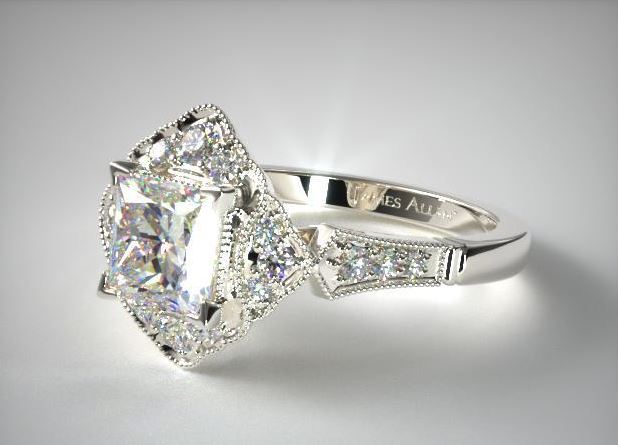
One of the main advantages of the princess cut is that while it is comparable to the round diamond in terms of brilliance and beauty, it is much more affordable than the round cut. Compare the princess and round diamonds below, which have similar specifications. The difference in price is significant.
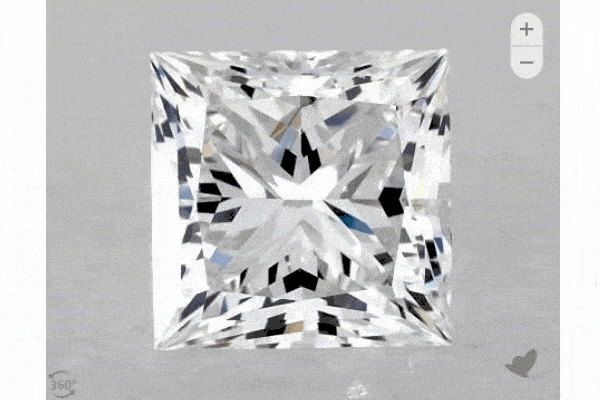
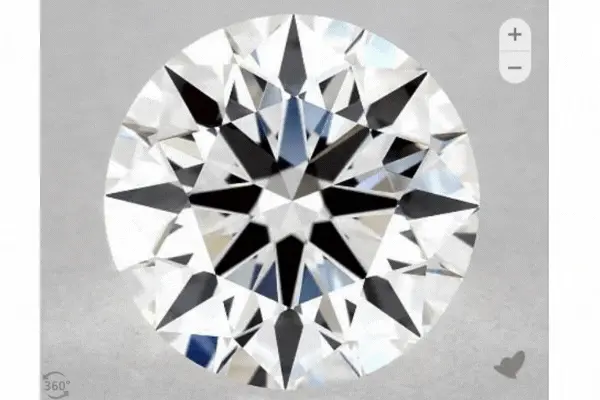
One of the main reasons for this affordability is due to the cutting process and the yield of the square shape. Rough diamonds are generally a cubic shape, which means that diamond manufacturers typically can create two princess cut diamonds from one rough diamond. This results in a lot less wastage of the rough diamond.
A princess cut can use about 80% to 90% of a rough diamond while the round brilliant uses only about 40%. That’s twice the amount that the round shape uses. No wonder then that the princess cut is a highly economical choice. When the yield is greater due to less wastage, this converts to lower prices for shoppers.
Evaluating Cut Quality of Princess Cut Diamonds
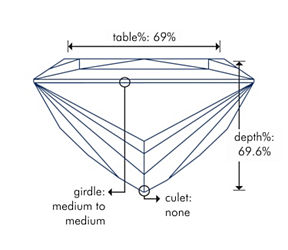
You will notice that evaluating the cut of the princess shape can get tricky. Most labs don’t provide cut grades for diamond shapes other than round diamonds.
The GIA only grades the Polish and Symmetry of princess cuts. Only the American Gem Society (AGS) has a cut grade for fancy diamonds (i.e., non-round cut diamonds), grading the cut according to the light performance of the stone.
Retailers tend to have their own grading criteria for princess cut diamonds, which can make it confusing when trying to evaluate the cut quality of your princess cut stone. Below is a comparison of the cut grade scale of the AGS with 5 diamond vendors.
- AGS: Poor, Fair, Good, Very Good, Excellent, Ideal
- Blue Nile: Good, Very Good, Astor Ideal
- James Allen: Good, Very Good, Ideal, True Hearts
- Whiteflash: None, Fair, Good, Very Good, Excellent, Ideal
- Brilliant Earth: Poor, Fair, Good, Very Good, Ideal, Super Ideal
Because there’s no consensus on princess cut parameters, it helps to have some general guidelines:
- Table
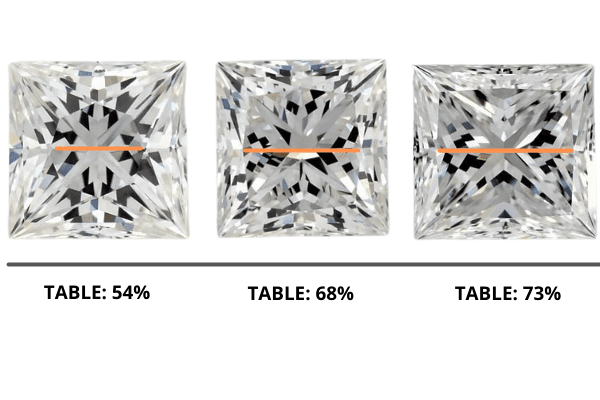
67% – 72% is generally considered excellent. If you prefer a small table, go below 66%, like this one. For a bigger table go over 73%, like this one. Bear in mind that smaller tables are harder to find.
- Depth
65% – 75% is excellent, with lower being better. Princess cuts with depths within this range tend to have the best brilliance to size ratio.
- Length to Width Ratio
There is a lot of variation in the length to width ratio of princess cuts, even though they are generally thought to be square-shaped. For a square look, choose a length to width ratio of 1 to 1.05. For a more rectangular appearance, go for a length to width ratio of 1.2 or above.
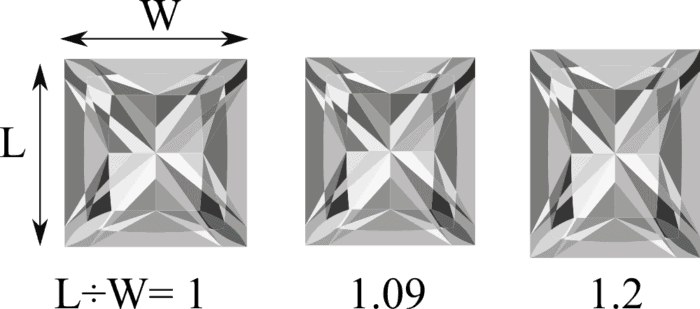
- Polish/Symmetry: Good, Very Good, or Excellent polish and symmetry will give you the best quality.
- Culet – None to very small is best.
Princess Cut Color
When picking the color of your diamond, go with your preference. The D-E-F (colorless) diamonds are the most popular choice, and therefore the most expensive. Consumers are willing to pay a higher price for these grades.
However, the difference between these grades is very slight and can hardly be noticed by the naked eye even though the price between grades can be very high.
Because princess cuts disperse light so brilliantly, you can drop down on the color grade scale and still have a stone that sparkles brightly. If the metal you choose for your jewelry is rose or yellow gold, a princess cut diamond with yellow tints would add a touch of warmth to the overall look of the ring.
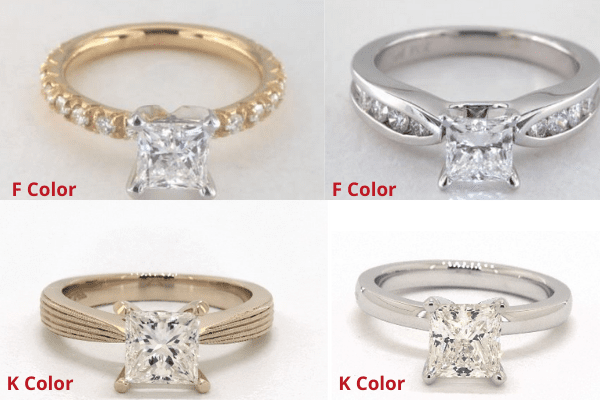
In the image above, compare the look of the F and K diamonds in both white and yellow gold settings. The F color diamond in the white gold setting appears colorless and sparkling, and has a seamless look compared to the F color in the yellow gold setting. The K color stone in the yellow gold setting appears less yellow than the K color in the white gold setting.
There is no right or wrong color grade, as this is a matter of preference. Consider dropping down to a grade H or even grade I for the best value for your stone.
Princess Cut Clarity
Unlike other square cuts such as Asscher, emerald, and baguette, the princess cut tends to hides inclusion fairly well. When choosing the clarity grade for your diamond, consider the size of the stone and whether there are any visible inclusions. These two considerations are more important than simply focusing on the clarity grade of the stone.
For a small stone, you can drop down to VS2 or lower and still have an excellent clarity grading, while for a larger stone, VS1 will still give you excellent clarity. To save money on your diamond, consider going for an eye-clean diamond lower on the clarity scale. Compare the two diamonds below – they’re similar except in their clarity grade. The price difference is massive!
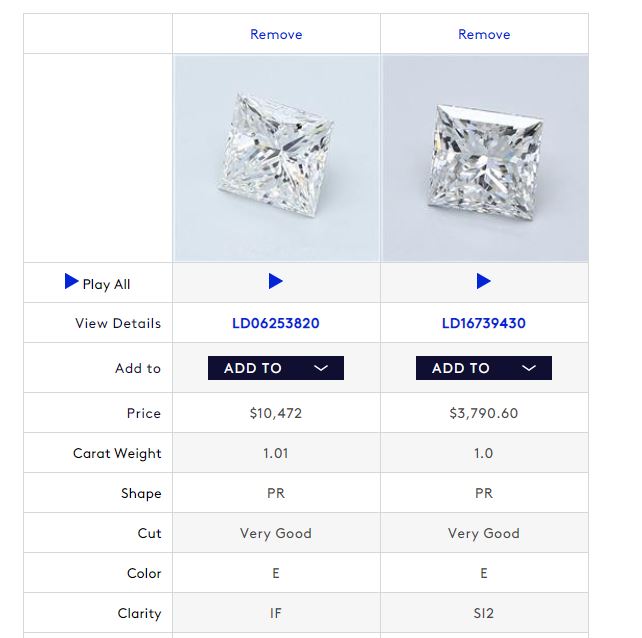
Blue Nile’s comparison feature allows you to easily compare specifications of different diamonds.
Because the princess shape is often cut from top quality diamond rough, finding low clarity grade stones such as Slightly Included or Included stones can be rare. Even so, if you can find an eye-clean diamond with a lower clarity grade, this would give you good value for money.
Always ensure that you purchase from a retailer that gives you access to photos and/or videos of the actual diamond, and not simply of a stock photo. This is especially important if purchasing online.
Remember that while the clarity grade is important, what is more critical is where the inclusions are located on the stone. Buying a diamond blind (that is, without seeing the actual stone) can be risky. You may think that relying on the lab report should be good enough, but while lab reports state the clarity grade, they don’t point out where the inclusions are located.
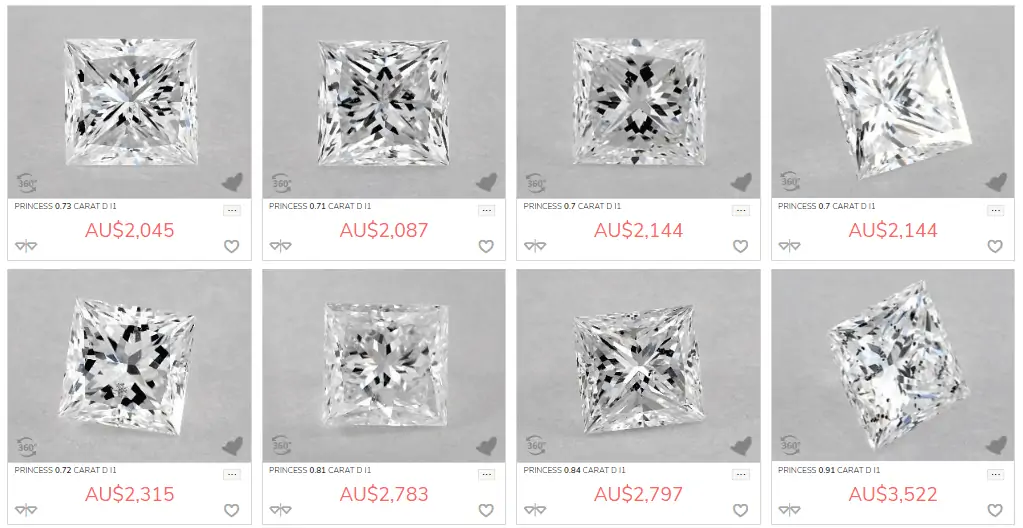
This is a random listing of Included princess cut diamonds. As you will notice, some have more noticeable inclusions than others. On their lab reports, these diamonds would all be very similar. With high quality images you will be able to cherry pick the best of the lot.
Best Settings for Princess Cut
The princess cut is versatile and works well with most settings, from simple to elaborate. As a solitaire ring, the stone looks amazing and stands out elegant and classy. It also looks stunning with accent or melee diamonds (just ensure that these are the same grade or just a grade apart as the main diamond or they will clash with the center stone).
One factor to note is that the princess cut has sharp points, unlike most other square shapes like emerald, which are actually 8-sided. These points are susceptible to chipping and ideally should be placed in a protective setting.
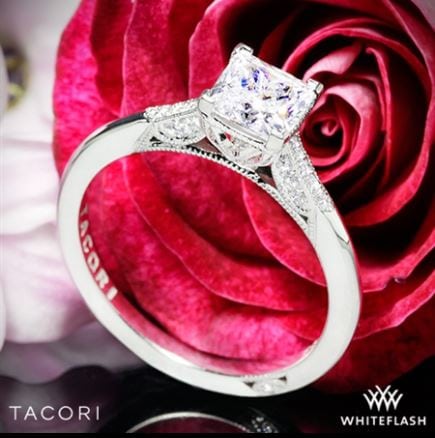
A 4-prong V-shaped setting will hold the diamond securely in place and ensure that the edges are safe. It also ensures that the diamond has maximum sparkle and minimal obstruction.
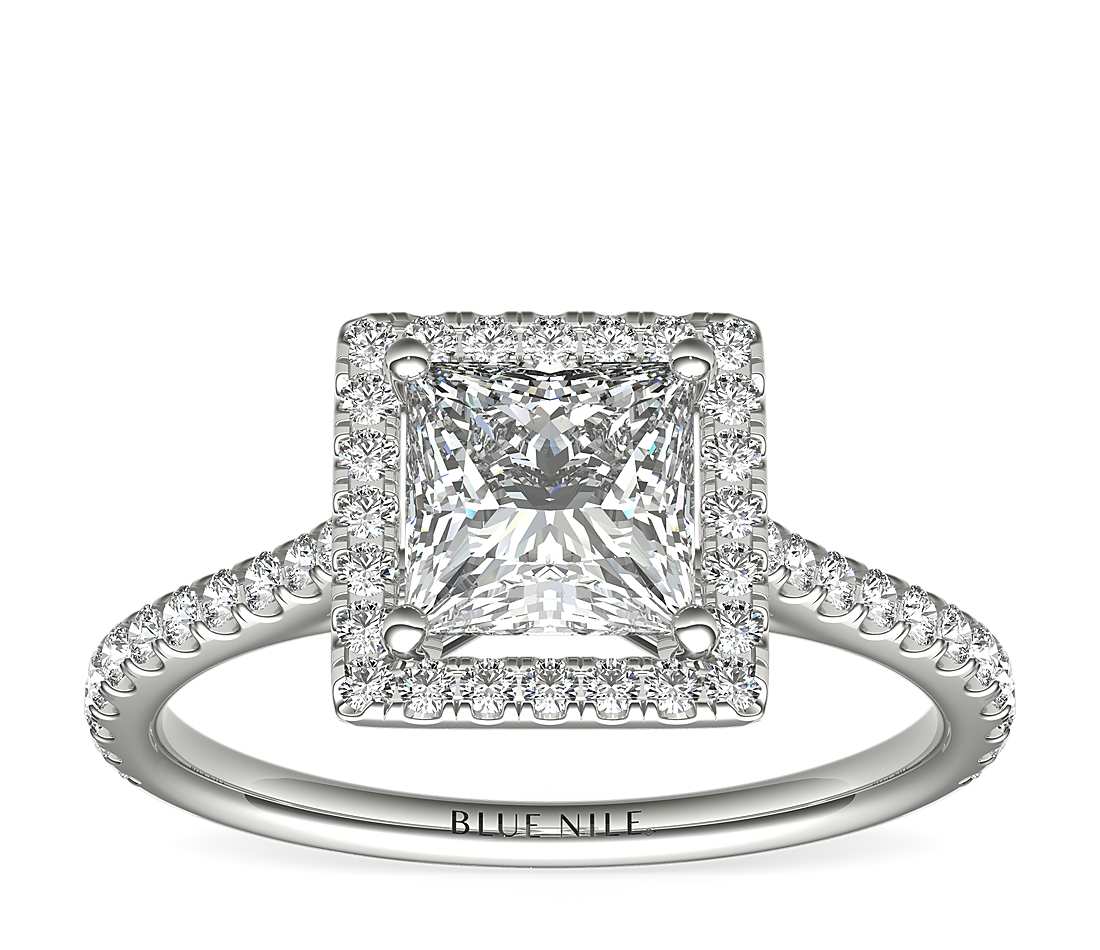
Bezel and halo settings are also ideal as they surround the entire diamond, protecting all its corners. Of the two, halo settings make princess diamonds appear larger, as they add more sparkle and diamond to the ring design, whereas bezel settings can make a diamond appear smaller by wrapping it in more metal. You can choose a square halo setting, like this one, or for a visually interesting contrast, consider a round halo setting, like this one.
Where to Buy Princess Cut Diamonds Online
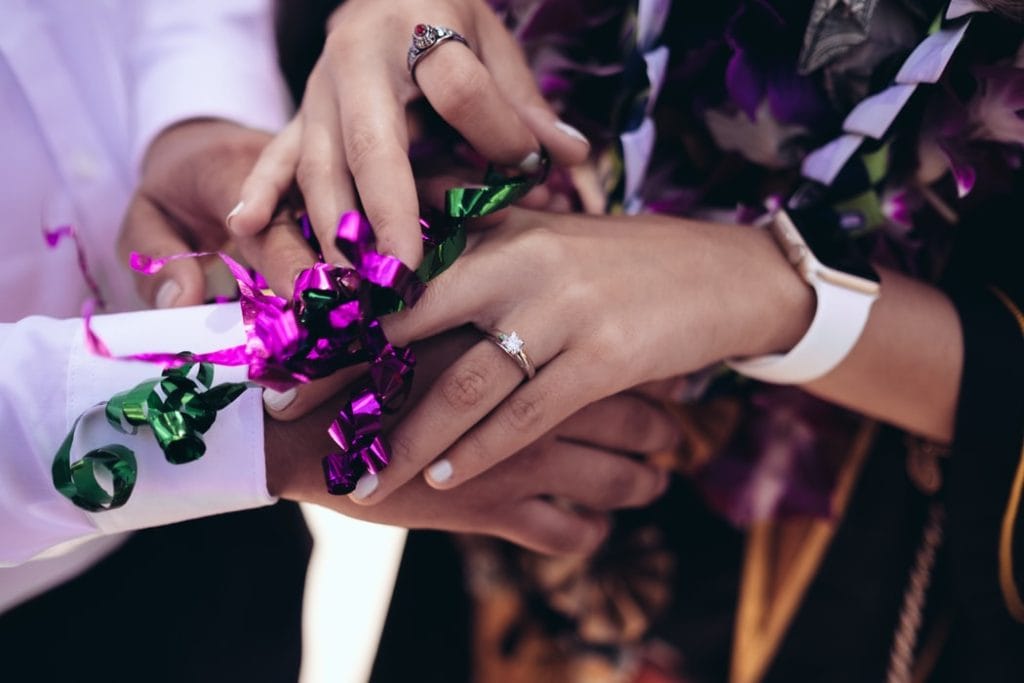
There are several online vendors that offer high quality princess diamonds. Ensure that the retailer you choose is reputable and are specialized in what they do. Ask for certification and make sure that the certifying lab is recognized – such as GIA, AGS and EGL. We recommend the following stores for their excellent customer service, high-quality products, commitment to facilitating the online shopping process and solid after sales policies.
Why: Superior diamond imaging, competitive prices, high quality, wide range
An online giant in the diamond space, James Allen a stunning collection of high-quality princess cut diamonds. The images and videos are unparalleled in quality and makes shopping online similar, if not better, to shopping in store.
Why: Competitive prices, wide range, great quality
Known for dominating the online diamond industry since the late 1990s, Blue Nile offers one of the largest online diamond inventories. Search princess cut diamonds here at competitive prices, solid after-sales policies, and great customer service.
Why: Superior cut quality, exclusive range, stunning designs
Whiteflash has earned an international reputation for the elite quality of their precision cut diamonds, and for their impeccable collection of designer engagement rings. Check their stunning range of diamond jewelry and loose diamonds.
Why: Impeccable quality, superior cut, small but exclusive inventory
Brian Gavin is a renowned expert in diamond cut – and it shows in their superior diamond quality. For the very best in diamonds, search their inventory of designer diamond jewelry and loose diamonds.
Why: Try before you buy, build your own ring, great quality
If you want to try out how a princess cut diamond ring looks on your finger before you commit to buying one, check out With Clarity’s Home Preview Service which is completely free. Find out more here.
Check out our quick comparison of the top online engagement ring retailers for more information.
